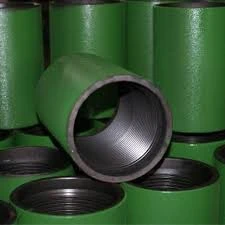- Afrikaans
- Albanian
- Amharic
- Arabic
- Armenian
- Azerbaijani
- Basque
- Belarusian
- Bengali
- Bosnian
- Bulgarian
- Catalan
- Cebuano
- Corsican
- Croatian
- Czech
- Danish
- Dutch
- English
- Esperanto
- Estonian
- Finnish
- French
- Frisian
- Galician
- Georgian
- German
- Greek
- Gujarati
- Haitian Creole
- hausa
- hawaiian
- Hebrew
- Hindi
- Miao
- Hungarian
- Icelandic
- igbo
- Indonesian
- irish
- Italian
- Japanese
- Javanese
- Kannada
- kazakh
- Khmer
- Rwandese
- Korean
- Kurdish
- Kyrgyz
- Lao
- Latin
- Latvian
- Lithuanian
- Luxembourgish
- Macedonian
- Malgashi
- Malay
- Malayalam
- Maltese
- Maori
- Marathi
- Mongolian
- Myanmar
- Nepali
- Norwegian
- Norwegian
- Occitan
- Pashto
- Persian
- Polish
- Portuguese
- Punjabi
- Romanian
- Russian
- Samoan
- Scottish Gaelic
- Serbian
- Sesotho
- Shona
- Sindhi
- Sinhala
- Slovak
- Slovenian
- Somali
- Spanish
- Sundanese
- Swahili
- Swedish
- Tagalog
- Tajik
- Tamil
- Tatar
- Telugu
- Thai
- Turkish
- Turkmen
- Ukrainian
- Urdu
- Uighur
- Uzbek
- Vietnamese
- Welsh
- Bantu
- Yiddish
- Yoruba
- Zulu
Understanding Perforated Pup Joints and Their Applications in Piping Systems
Understanding Perforated Pup Joints Applications and Importance
In the realm of oil and gas drilling, the terminology surrounding equipment and tools can often be complex and nuanced. One such component that plays a critical role is the perforated pup joint. These specialized pipe sections are essential in various drilling and production operations, offering unique advantages that enhance efficiency and effectiveness.
A pup joint is essentially a short length of pipe used to connect various types of drilling equipment. The term perforated refers to the process of creating holes or openings along the length of the joint. These perforations are designed to facilitate the flow of fluids—be it oil, gas, or water—from the surrounding formation into the wellbore. The unique design of perforated pup joints makes them indispensable in enhancing the communication between the well and the reservoir.
One of the primary applications of perforated pup joints is in completion and stimulation operations. During the completion phase of a well, it is crucial to ensure that the hydrocarbons can flow freely from the reservoir into the well. By employing perforated pup joints, operators can effectively manage the flow and ensure optimal production rates. The perforations provide a pathway that minimizes resistance, thereby enhancing the overall efficiency of fluid movements.
perforated pup joints

Moreover, perforated pup joints are vital in various stimulation techniques such as hydraulic fracturing. In this process, fluid is injected at high pressure to create fractures in the reservoir rocks, allowing hydrocarbons to flow more easily. The perforated pup joints are instrumental in delivering the fracturing fluids into the wellbore, ensuring that they reach the target zones effectively.
Another notable advantage of perforated pup joints is their versatility. They can be utilized in vertical, horizontal, or even deviated wells, making them suitable for a wide range of geological formations and drilling conditions. This adaptability is particularly advantageous in today’s complex oil and gas landscape, where operators often encounter varied challenges based on the characteristics of the reservoirs.
From a design perspective, perforated pup joints are engineered to withstand high pressures and corrosive environments typically present in oil and gas wells. The materials used in their construction are often coated or treated to enhance durability and longevity, which is essential for reducing operating costs associated with maintenance and replacements.
In summary, perforated pup joints are a fundamental component in the drilling and production of hydrocarbons. Their ability to facilitate fluid flow and their application in completion and stimulation operations make them indispensable in modern oil and gas exploration and production. As the industry evolves, understanding and effectively using perforated pup joints will remain crucial for maximizing efficiency and productivity in well operations. Thus, gaining insights into this vital component not only emphasizes its significance but also highlights the intricate nature of oil and gas extraction processes.
-
Tubing Pup Joints: Essential Components for Oil and Gas OperationsNewsJul.10,2025
-
Pup Joints: Essential Components for Reliable Drilling OperationsNewsJul.10,2025
-
Pipe Couplings: Connecting Your World EfficientlyNewsJul.10,2025
-
Mastering Oilfield Operations with Quality Tubing and CasingNewsJul.10,2025
-
High-Quality Casing Couplings for Every NeedNewsJul.10,2025
-
Boost Your Drilling Efficiency with Premium Crossover Tools & Seating NipplesNewsJul.10,2025







